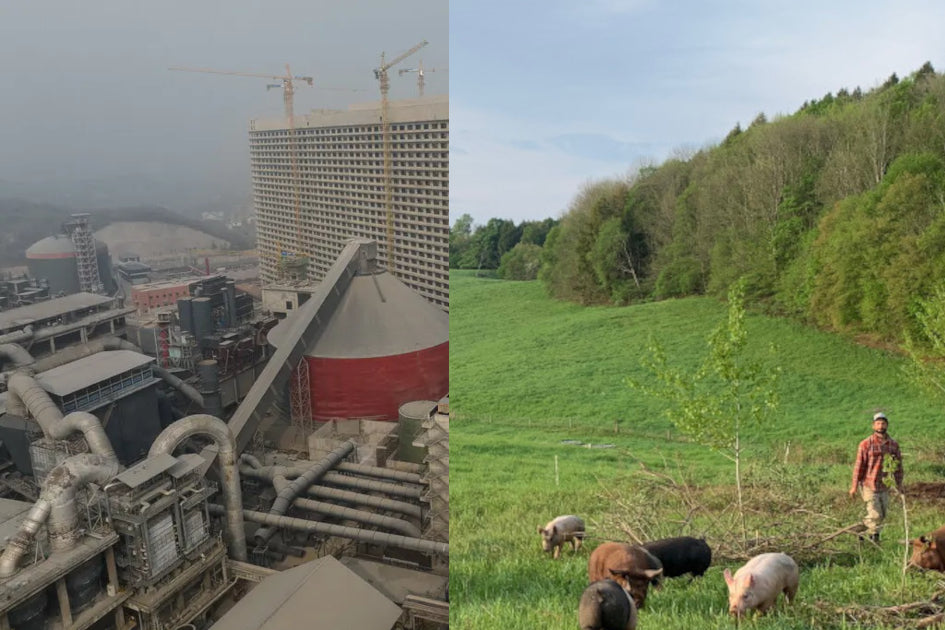What do you call a farm this is bigger than a factory farm? A mega farm? For years now pork producers in China have been building production units that resemble high rise prison blocks more than anything agricultural. While American factory hog farms average about nine thousands animals each, the Chinese ones can hold hundreds of thousands. To give you a sense of the scope of these operations, one farm may feed a million pounds of grain a day.
As I said, these have been around for years now, but an article in the New York Times this past week has brought awareness of them to the wider American public. The article is short but reasonably thorough, with a good discussion of the cultural and economic conditions that make such farms a rational decision in the Chinese context. What it does not discuss in any detail is the welfare of the pigs.
One interesting reaction I’ve noticed is horror at the scale of the sheer size of Chinese farms, along with an implicit or explicit assumption that the pigs raised in such a building must have a horrible quality of life. I agree! I say it interests me because I see no reason to believe that the pigs in these mega farms suffer any more than pigs in their more modest American counterparts; there’s no reason to think ten thousand pigs crammed together are any more content than a quarter million.
But though I rationally know this, if I’m honest I also share the horror. To make my point clearer — I don’t see any reason to think the Chinese farms are worse than other factory farms when it comes to pig welfare, yet I nevertheless feel an instinctive revulsion at how big they are, at the logic of efficient production taken to such an extreme. I look at it and think, “that’s no way to raise pigs.”
In this sense images of mega farms are clarifying. Though I’m not enthusiastic about it, I believe improving conditions in factory farms is an absolutely critical animal welfare goal. Factory farms are becoming more, not less common, and so long as they exist making the lives of the animals they house as tolerable as possible will alleviate immense amounts of suffering. I know ‘tolerable’ is hardly a lofty goal, but it would be a huge improvement.
But I can say this and still want something better, an alternative to the logic that underlies both the Chinese mega farm and the North Carolina factory farm. After all, these have much more in common with each other than with a farm that raises fewer pigs in a manner that seeks to integrate them with nature.
With pork in particular there’s so much room for production that is quite efficient (though not, I grant, as efficient as it would be in a factory farm) while still allowing the pigs a high quality of life.
There are two other notes about this article. First, I would like to add emphasis to a point it raises. Disease risk in such facilities is immense. The math is simple: the bigger the facility, the bigger the disaster when a serious pathogen starts spreading within it. Viruses that effect pigs have an uncanny way of ending up in factory farms, no matter the biosecurity measures taken.
Second, I am curious about the conditions in the area around such a farm. Factory hog farms are well known for degrading the quality of life in surrounding communities, particularly the air quality. I have a hard time an exponentially bigger farm wouldn’t make a huge area around it virtually unlivable.

